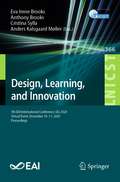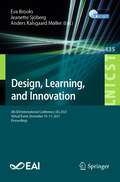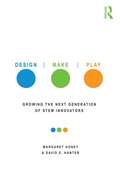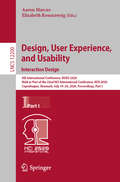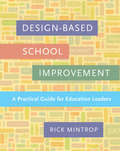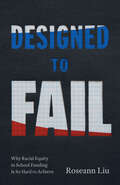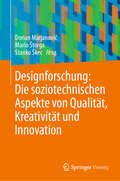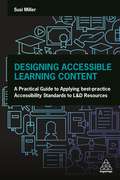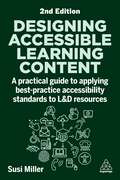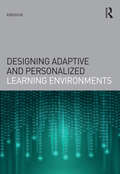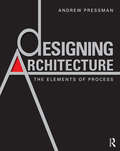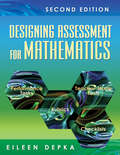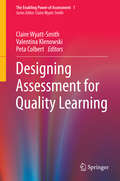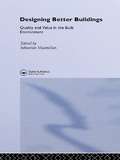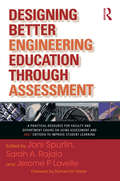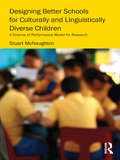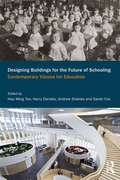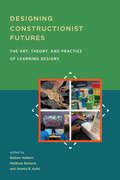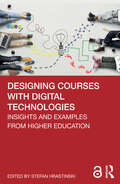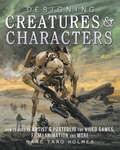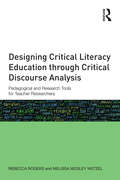- Table View
- List View
Design, Learning, and Innovation: 5th EAI International Conference, DLI 2020, Virtual Event, December 10-11, 2020, Proceedings (Lecture Notes of the Institute for Computer Sciences, Social Informatics and Telecommunications Engineering #366)
by Cristina Sylla Anthony Brooks Eva Irene Brooks Anders Kalsgaard MøllerThis book constitutes the refereed post-conference proceedings the 5th EAI International Conference on DLI 2020, Design, Leaning and Innovation, which took place in December 2020. Due to COVID-19 pandemic the conference was held virtually. The 14 revised full papers presented were carefully selected from 40 submissions and are organized in four thematic sessions on: digital technologies and learning; designing for innovation; digital games, gamification and robots; designs for innovative learning.
Design, Learning, and Innovation: 6th EAI International Conference, DLI 2021, Virtual Event, December 10-11, 2021, Proceedings (Lecture Notes of the Institute for Computer Sciences, Social Informatics and Telecommunications Engineering #435)
by Eva Brooks Anders Kalsgaard Møller Jeanette SjöbergThis book constitutes the refereed post-conference proceedings the 6th EAI International Conference on Design, Leaning and Innovation, DLI 2021, which took place in December 2021. Due to COVID-19 pandemic the conference was held virtually. The theme for DLI 2021 was “Shifting boundaries to discover novel ways and emerging technologies to realise human needs, ideas, and desires” targeting a conceptualisation of the effects and impact of digital technologies for, in an inclusive and playful way, fostering human beings to realising their needs, ideas and desires. The 17 revised full papers presented were carefully selected from 36 submissions and are organized in four thematic sessions on: digital technologies, design and learning; tools and models; artificial intelligence, virtual reality and augmented reality in learning; innovative designs and learning.
Design, Make, Play: Growing the Next Generation of STEM Innovators
by Margaret Honey David E. Kanter"Design, Make, Play: Growing the Next Generation of STEM Innovators is a resource for practitioners, policymakers, researchers and program developers that illuminates creative, cutting edge ways to inspire and motivate young people about science and technology learning. The book is aligned with the National Research Council's new Framework for Science Education, which includes an explicit focus on engineering and design content, as well as integration across disciplines. Extensive case studies explore real world examples of innovative programs that take place in a variety of settings, including schools, museums, community centers, and virtual spaces. Design, Make, and Play are presented as learning methodologies that have the power to rekindle children's intrinsic motivation and innate curiosity about STEM (science, technology, engineering, and mathematics) fields. A digital companion app showcases rich multimedia that brings the stories and successes of each program's and the students who learn there's to life"--
Design, User Experience, and Usability. Application Domains: 8th International Conference, DUXU 2019, Held as Part of the 21st HCI International Conference, HCII 2019, Orlando, FL, USA, July 26–31, 2019, Proceedings, Part III (Lecture Notes in Computer Science #11585)
by Aaron Marcus Wentao WangThe four-volume set LNCS 11583, 11584, 11585, and 11586 constitutes the proceedings of the 8th International Conference on Design, User Experience, and Usability, DUXU 2019, held as part of the 21st International Conference, HCI International 2019, which took place in Orlando, FL, USA, in July 2019.The total of 1274 papers and 209 posters included in the 35 HCII 2019 proceedings volumes was carefully reviewed and selected from 5029 submissions.DUXU 2019 includes a total of 167 regular papers, organized in the following topical sections: design philosophy; design theories, methods, and tools; user requirements, preferences emotions and personality; visual DUXU; DUXU for novel interaction techniques and devices; DUXU and robots; DUXU for AI and AI for DUXU; dialogue, narrative, storytelling; DUXU for automated driving, transport, sustainability and smart cities; DUXU for cultural heritage; DUXU for well-being; DUXU for learning; user experience evaluation methods and tools; DUXU practice; DUXU case studies.
Design, User Experience, and Usability. Case Studies in Public and Personal Interactive Systems: 9th International Conference, DUXU 2020, Held as Part of the 22nd HCI International Conference, HCII 2020, Copenhagen, Denmark, July 19–24, 2020, Proceedings, Part III (Lecture Notes in Computer Science #12202)
by Aaron Marcus Elizabeth RosenzweigThis book constitutes the refereed proceedings of the 9th International Conference on Design, User Experience, and Usability, DUXU 2020, held as part of the 22nd International Conference on Human-Computer Interaction, HCII 2020, in Copenhagen, Denmark, in July 2020. The conference was held virtually due to the COVID-19 pandemic. From a total of 6326 submissions, a total of 1439 papers and 238 posters has been accepted for publication in the HCII 2020 proceedings. The 51 papers included in this volume were organized in topical sections on interactions in public, urban and rural contexts; UX design for health and well-being; DUXU for creativity, learning and collaboration; DUXU for culture and tourism.
Design, User Experience, and Usability. Interaction Design: 9th International Conference, DUXU 2020, Held as Part of the 22nd HCI International Conference, HCII 2020, Copenhagen, Denmark, July 19–24, 2020, Proceedings, Part I (Lecture Notes in Computer Science #12200)
by Aaron Marcus Elizabeth RosenzweigThis book constitutes the refereed proceedings of the 9th International Conference on Design, User Experience, and Usability, DUXU 2020, held as part of the 22nd International Conference on Human-Computer Interaction, HCII 2020, in Copenhagen, Denmark, in July 2020. The conference was held virtually due to the COVID-19 pandemic.From a total of 6326 submissions, a total of 1439 papers and 238 posters has been accepted for publication in the HCII 2020 proceedings. The 40 papers included in this volume were organized in topical sections on UX design methods, tools and guidelines, interaction design and information visualization, and emotional design.
Design-Based Research in Education: Theory and Applications
by Zoi A. Philippakos, Emily Howell and Anthony PellegrinoEffective research in educational settings requires collaboration between researchers and school-based practitioners to codesign instruction and assessment, analyze findings to inform subsequent iterations, and make thoughtful revisions. This innovative reference and course text examines the theory and practice of design-based research (DBR), an important methodology for conducting studies in authentic educational contexts. Leading experts provide specific examples of high-quality DBR addressing different research foci, grade levels, and subject areas (literacy/English language arts, math, and science). Applications are presented for curriculum development, intervention, assessment, and digital contexts, as well as teaching second-language learners. Also addressed is DBR&’s role in educator preparation, professional development, dissertation research, and technical education.
Design-Based School Improvement: A Practical Guide for Education Leaders
by Rick MintropAt the heart of the effort to enact and scale up successful school reforms is the need for more robust links between research and practice. One promising approach is design development, a methodology widely used in other fields and only recently adapted to education, which offers a disciplined process for identifying practical problems, assessing evidence of outcomes, accounting for variability in implementation and results, and establishing a foundation for broader understanding of the problem and proposed solutions. This exciting new book provides a practical guide for education leaders who are seeking to address issues of equity in their schools and want to pursue this approach. The book provides a step-by-step description of the process, augmented by case studies of four education leaders:Christine, a middle school principal who is concerned with the volume of disciplinary referrals in her school;Michelle, an elementary school principal who wants to address achievement gaps;Eric, an assistant superintendent who wants to improve the quality of principals&’ instructional feedback to teachers; andNora, a high school principal who is concerned about the use of racial and homophobic slurs in the hallways.The book follows each of these leaders as they formulate and refine interventions to address these problems. Design-Based School Improvement also includes a series of &“excursions into theory&” that discuss the research basis for design-based improvement. The author—a leading thinker about policy implementation and school reform—shows a profound appreciation for the complexity of work in schools and the deep and sustained thinking entailed in undertaking productive change. By bringing theory to life and putting it in the hands of skilled practitioners, this book promises to become an invaluable resource for education leaders seeking to solve problems of equity and social justice in schools.
Designed to Fail: Why Racial Equity in School Funding Is So Hard to Achieve
by Roseann LiuA provocative examination of how systemic racism in education funding is sustained. For people who care about urban school districts like Philadelphia’s, addressing the challenges that these schools face often boils down to the need for more money. But why are urban districts that serve Black and Brown students still so perennially underfunded compared to majority-white ones? Why is racial equity in school funding so hard to achieve? In Designed to Fail, Roseann Liu provides an inside look at the Pennsylvania state legislature and campaigns for fair funding to show how those responsible for the distribution of school funding work to maintain the privileges of majority-white school districts. Liu analyzes how colorblind policies, political structures, and the maintenance of the status quo by people in power perpetuate wide and deepening racial disparities in education funding. Taking a lesson from community organizers fighting for a racially equitable school funding system, Liu’s work is a bold call to address structural racism at the root and organize from a place of abundant justice.
Designforschung: Die soziotechnischen Aspekte von Qualität, Kreativität und Innovation
by Mario Štorga Dorian Marjanović Stanko ŠkecDas Buch bietet einen ganzheitlichen Einblick in die Designforschung, eine umfassende und zusammenhängende Vision des neuesten Wissens über die Schaffung und Verbesserung hochwertiger Produkte, Kreativität und Innovation. Die Beiträge in diesem Band dienen als erhellender Kompass für das Verständnis der Ingenieurdesignforschung und bieten eine umfassende Perspektive auf Produktentwicklung, Kreativität, Innovation, Erfindung und Produktivität, indem sie die historische Entwicklung der Designwissenschaft aufzeigen und die Grenzen der Ingenieurdesignforschung erkunden. Die vorgestellten Bildungsprojekte wurden an EU-Universitäten durchgeführt und bieten Einblicke für zukünftige Designkurse. Zentral in den Diskussionen ist die entscheidende Rolle der soziotechnischen Dimensionen im Ingenieurdesign, wobei Fragen der Kreativität, Qualität, menschzentrierter Methoden und der Anforderungen neuer Technologien erörtert werden, die ihre entscheidende Rolle für den Erfolg des Ingenieurdesigns betonen. Der Text bietet einen panoramischen Überblick über den aktuellen Stand der Designforschung und kritische Themen und liefert eine umfassende Übersicht für junge Forscher. Pädagogen und Mentoren werden ihr Wissen vertiefen, während Experten ihre Methoden und Werkzeuge verfeinern.
Designing A Market Basket For Naep: Summary Of A Workshop
by Committee on NAEP Reporting Practices: Investigating District-Level Market-Basket ReportingThe National Academies Press (NAP)--publisher for the National Academies--publishes more than 200 books a year offering the most authoritative views, definitive information, and groundbreaking recommendations on a wide range of topics in science, engineering, and health. Our books are unique in that they are authored by the nation's leading experts in every scientific field.
Designing Accessible Learning Content: A Practical Guide to Applying best-practice Accessibility Standards to L&D Resources
by Susi MillerMaking learning and development (L&D) content inclusive and accessible for everyone is not only a good thing to do, it's the right thing to do. Designing Accessible Learning Content provides evidence-based advice on designing digital learning content that ensures all learners are included and are therefore able to perform to their full potential.This is a practical guide on accessibility for anyone involved in the design, creation, development or testing of online learning content. It provides detailed guidance on how to meet the Web Content Accessibility Guidelines making it essential reading for L&D professionals, instructional designers and course developers who need to comply with legal accessibility requirements. Using the author's 'eLearning Accessibility Framework', Designing Accessible Learning Content demystifies sometimes complex technical accessibility standards and provides an easy to follow contextual framework uniquely designed for learning content created using any authoring tool.This book also demonstrates how creating accessible learning content can improve usability and provide the best possible learning experience for everyone. In addition, it offers essential background information such as a focus on disability, an overview of assistive technology and an exploration of the case for digital accessibility. This guarantees that L&D professionals have the vital background knowledge they need to make sense of accessibility before they begin practically applying the principles. With online checklists, learner case studies, and industry perspectives, Designing Accessible Content is an essential handbook for all L&D professionals seeking to harness the benefits of accessibility in order to improve their learning content for everyone.
Designing Accessible Learning Content: A Practical Guide to Applying best-practice Accessibility Standards to L&D Resources
by Susi MillerMaking learning and development (L&D) content inclusive and accessible for everyone is not only a good thing to do, it's the right thing to do.Designing Accessible Learning Content is a practical guide on accessibility for anyone involved in the design, creation, development or testing of online learning content. Now updated to include detailed guidelines on the Web Content Accessibility Guidelines and the nine new standards, this book provides HR and OD professionals and academics with evidence-based advice on designing inclusive digital learning content.Featuring real-world examples from industry-leading brands, this book demonstrates how accessible learning content can improve usability and provide the best possible learning experience for all. It is an essential handbook for all L&D professionals seeking to harness the benefits of accessibility in order to improve their learning content for everyone.
Designing Adaptive and Personalized Learning Environments (Interdisciplinary Approaches to Educational Technology)
by KinshukDesigning Adaptive and Personalized Learning Environments provides a theoretically-based yet practical guide to systematic design processes for learning environments that provide automatic customization of learning and instruction. The book consists of four main sections: In "Introduction and Overview," the concepts of adaptivity and personalization are introduced and explored in detail. In "Theoretical Perspectives with Example Applications," various theoretical concepts underlying adaptive and personalized learning are discussed, including cognitive profiling, content-based adaptivity, exploration-based adaptivity, and mobile and ubiquitous settings. In "Practical Perspectives with Example Applications," the implementation process for adaptive and personalized learning environments is described, followed by application in various contexts. In "Validation and Future Trends," various evaluation techniques for validating the efficiency and efficacy of adaptive and personalized learning systems are discussed. This final section concludes with a discussion of emerging trends in adaptive and personalized learning research. Based on cutting-edge research, Designing Adaptive and Personalized Learning Environments is appropriate as a primary textbook for both undergraduate and graduate courses focused on the design of learning systems, and as a secondary textbook for a variety of courses in programs such as educational technology, instructional design, learning sciences, digital literacy, computer based systems, and STEM content fields.
Designing Architecture: The Elements of Process
by Andrew PressmanDesigning Architecture is an indispensable tool to assist both students and young architects in formulating an idea, transforming it into a building, and making effective design decisions. This book promotes integrative and critical thinking in the preliminary design of buildings to inspire creativity, innovation, and design excellence. This compendium of individual wisdom and collective experience offers explicit guidance to students and young professionals on how to approach, analyze, and execute specific tasks; develop and refine a process to facilitate the best possible design projects; and create meaningful architectural form. Here the design process – from orchestrating client participation to finalizing schematic design – is explored and illuminated. The following material is presented to make the book a useful didactic tool for professional development: explicit strategies for doing design rather than simply reviewing principles and precedents creative ideas in approaching and framing problems in design terms specific methods to translate ideas to culturally significant, socially responsive, and environmentally sensitive buildings techniques to integrate all levels of cognition from analysis to epiphany counsel on developing a personalized process for engaging design projects case studies augment the text and chronicle fascinating applications of the design process. The essence of this book lies in an integrated and holistic approach to each unique project as well as fostering curiosity and exploration – a departure from algorithms, easy generalities, or a formula for design. Designing Architecture will inspire readers to elevate the quality of preliminary designs and unravel some of the mystery of creating the most beautiful, responsive, and responsible architectural design possible.
Designing Assessment for Mathematics
by Eileen M. DepkaThis updated edition provides strategies for deepening students' understanding of math concepts, involving students in standards-based rubric development, and using rubric data to improve instruction.
Designing Assessment for Quality Learning
by Claire Wyatt-Smith Valentina Klenowski Peta ColbertThis book brings together internationally recognised scholars with an interest in how to use the power of assessment to improve student learning and to engage with accountability priorities at both national and global levels. It includes distinguished writers who have worked together for some two decades to shift the assessment paradigm from a dominant focus on assessment as measurement towards assessment as central to efforts to improve learning. These writers have worked with the teaching profession and, in so doing, have researched and generated key insights into different ways of understanding assessment and its relationship to learning. The volume contributes to the theorising of assessment in contexts characterised by heightened accountability requirements and constant change. The book's structure and content reflect already significant and growing international interest in assessment as contextualised practice, as well as theories of learning and teaching that underpin and drive particular assessment approaches. Learning theories and practices, assessment literacies, teachers' responsibilities in assessment, the role of leadership, and assessment futures are the organisers within the book's structure and content. The contributors to this book have in common the view that quality assessment, and quality learning and teaching are integrally related. Another shared view is that the alignment of assessment with curriculum, teaching and learning is linchpin to efforts to improve both learning opportunities and outcomes for all. Essentially, the book presents new perspectives on the enabling power of assessment. In so doing, the writers recognise that validity and reliability - the traditional canons of assessment - remain foundational and therefore necessary. However, they are not of themselves sufficient for quality education. The book argues that assessment needs to be radically reconsidered in the context of unprecedented societal change. Increasingly, communities are segregating more by wealth, with clear signs of social, political, economic and environmental instability. These changes raise important issues relating to ethics and equity, taken to be core dimensions in enabling the power of assessment to contribute to quality learning for all. This book offers readers new knowledge about how assessment can be used to re/engage learners across all phases of education.
Designing Better Building: Quality And Value In The Built Environment
by Sebastian MacmillanDesign is widely recognised as the key to improving the quality of the built environment. This well-illustrated book comprises 15 chapters written by leading practitioners, clients, academics and other experts, and presents the latest thinking on what design quality is and how to achieve it. For design practitioners and their clients alike, the book provides evidence to justify greater focus on, and investment in, design. It summarises the benefits that arise from good design - such as, civic pride in the urban environment, the stimulation of urban regeneration, corporate identity, occupant productivity and health in offices, improved learning outcomes in schools, better patient recovery rates in hospitals, as well as reduced environmental impact. And it illustrates these benefits through case study examples. Eight chapters focus on case studies of exemplary buildings in particular sectors - offices, schools, housing, and hospitals - and explain why and how they came to be designed, and the design qualities they exhibit.
Designing Better Engineering Education Through Assessment: A Practical Resource for Faculty and Department Chairs on Using Assessment and ABET Criteria to Improve Student Learning
by Richard M. Felder Jerome P. Lavelle Sarah A. Rajala Joni E. SpurlinThis book is written for engineering faculty and department chairs as a practical guide to improving the assessment processes for undergraduate and graduate engineering education in the service of improved student learning. It is written by engineering faculty and assessment professionals who have many years of experience in assessment of engineering education and of working with engineering faculty. The book reflects the emphasis placed on student outcomes assessment by ABET, Inc., the organization that accredits most U.S. engineering, computer science and technology programs, as well as providing substantial equivalency evaluations to international engineering programs. The book begins with a brief overview of assessment theory and introduces readers to key assessment resources. It illustrates–through practical examples that reflect a wide range of engineering disciplines and practices at both large and small institutions, and along the continuum of students’ experience, from first year to capstone engineering courses through to the dissertation–how to go about applying formative and summative assessment practices to improve student learning at the course and program levels. For most institutions, assessment of graduate education is new; therefore, there are readers who will be particularly interested in the chapters and examples related to graduate education. This book concludes with a vision for the future of assessment for engineering education. The authors cover five basic themes:· Use of assessment to improve student learning and educational programs at both undergraduate and graduate levels· Understanding and applying ABET criteria to accomplish differing program and institutional missions· Illustration of evaluation/assessment activities that can assist faculty in improving undergraduate and graduate courses and programs· Description of tools and methods that have been demonstrated to improve the quality of degree programs and maintain accreditation· Identification of methods for overcoming institutional barriers and challenges to implementing assessment initiatives.
Designing Better Schools for Culturally and Linguistically Diverse Children: A Science of Performance Model for Research
by Stuart McNaughtonHow can schools be better designed to enable equitable academic outcomes for culturally and linguistically diverse children from communities lacking in economic, political and social power? Putting forward a robust ‘science of performance’ model of school change based on a specified process of research and development in local contexts, this book: lays out the traditions of optimism and pessimism about effective schooling for at-risk students reviews the international and national evidence for the effectiveness of schools and school systems in reducing disparities in achievement describes the challenges educational research must address to solve the problem of school effectiveness, proposes strict criteria against which effectiveness should be judged, and examines in detail examples where change has been demonstrated proposes how researchers, professionals, and policy-makers can develop more effective systems. Bringing together structural and psychological accounts of the nature of schools, and establishing theoretically defensible criteria for judging effectiveness, this book is a critically important contribution to advancing the science of making schools more effective.
Designing Buildings for the Future of Schooling: Contemporary Visions for Education
by Harry Daniels Andrew Stables Hau Ming Tse Sarah CoxBringing together leading experts from the fields of architecture, design, engineering, education and the social sciences, this valuable collection presents a multidimensional understanding of the complexities and ways in which school designs influence and are influenced by educational practice. Moving beyond the long-debated question as to whether the design of a school influences pedagogic practice, chapters acknowledge the multiple and diverse ways in which teaching, learning, development and inclusion are impacted by the nature and quality of the physical environment. Considering changes in national and international policy, and exploring the changing pressures and demands on design, education and schooling more broadly, contributors rethink and re-envision those aspects of design and educational practice in which they specialise. Together, these chapters present a bold vision for the future conceptualisation, development and use of school buildings and facilities. An important contribution to debates on school design and education, inclusion and pedagogy, this is an essential and fascinating read for students, researchers, lecturers and policymakers involved in the fields of education and architecture.
Designing Constructionist Futures: The Art, Theory, and Practice of Learning Designs
by Nathan Holbert, Matthew Berland, and Yasmin B. KafaiA diverse group of scholars redefine constructionism--introduced by Seymour Papert in 1980--in light of new technologies and theories.Constructionism, first introduced by Seymour Papert in 1980, is a framework for learning to understand something by making an artifact for and with other people. A core goal of constructionists is to respect learners as creators, to enable them to engage in making meaning for themselves through construction, and to do this by democratizing access to the world's most creative and powerful tools. In this volume, an international and diverse group of scholars examine, reconstruct, and evolve the constructionist paradigm in light of new technologies and theories.
Designing Courses with Digital Technologies: Insights and Examples from Higher Education
by Stefan HrastinskiDesigning Courses with Digital Technologies offers guidance for higher education instructors integrating digital technologies into their teaching, assessment and overall support of students. Written by and for instructors from a variety of disciplines, this book presents evaluations that the contributors have implemented in real-life courses, spanning blended and distance learning, flipped classrooms, collaborative technologies, video-supported learning and beyond. Chapter authors contextualize their approaches beyond simple how-tos, exploring both the research foundations and professional experiences that have informed their use of digital tools while reflecting on their successes, challenges and ideas for future development.
Designing Creatures and Characters: How to Build an Artist's Portfolio for Video Games, Film, Animation and More
by Marc Taro HolmesAll You Need Is a Pencil, Paper and Your Imagination! Ever wondered how you could become a character designer for video games, film or animation? Veteran art director and concept artist Marc Taro Holmes shares proven methods for honing the skills and building the portfolio necessary to become a pro gaming artist. This is the first and only work-at-your-own pace home study program that teaches the crucial insider knowledge needed to break into the entertainment-design industry and develop your own style--all you need are a pencil, paper and your imagination. The projects within this straightforward guide are constructed to help you apply your existing drawing and digital art skills to character design. Or, if you're still working on your skills, it will help you improve while at the same time turning your mind into an idea-generating machine. Unlock the Secrets to Character and Creature DesignFollow the creature design process from start to finish: 35 projects are divided into 4 challenge levels, ranging from brainstorming and drawing character blueprints to completing market-ready illustrations. As the levels advance, the projects become more complex.Learn to solve design problems: Every project introduces you to an open-ended fictional assignment inspired by industry experience. Each project has a list of minimum deliverables--the basics to get to the next stage--plus bonus goals. You receive virtual merit badges for each achievement you complete.Think like a pro: Over the 155 possible artistic achievements, you'll be asked to find a solution to every type of conceptual problem you might encounter as a professional creature or character designer.Build your portfolio: Work toward creating an outstanding portfolio. Improve your skills and push yourself to create a fine-tuned presentation that could get you your eventual dream job."This is a workout for the imagination, a boot camp for creativity." --Marc Taro Holmes
Designing Critical Literacy Education through Critical Discourse Analysis: Pedagogical and Research Tools for Teacher-Researchers
by Rebecca Rogers Melissa Mosley WetzelUniquely bringing together discourse analysis, critical literacy, and teacher research, this book invites teacher educators, literacy researchers, and discourse analysts to consider how discourse analysis can be used to foster critical literacy education. It is both a guide for conducting critical discourse analysis and a look at how the authors, alongside their teacher education students, used the tools of discourse analysis to inquire into, critique, and design critical literacy practices. Through an intimate look at the workings of a university teacher education course and the discourse analysis tools that teacher-researchers use to understand their classrooms, the book provides examples of both pre-service teachers and teacher educators becoming critically literate. The context-rich examples highlight the ways in which discourse analysis aids teachers’ decision making in the moment and reflections on their practice over time. Readers learn to conduct discourse analysis as they read about critical literacy practices at the university level. Designed to be interactive, each chapter features step-by-step procedures for conducting each kind of discourse analysis (narrative, critically oriented, multimodal), sample analyses, and additional readings and resources. By attending to the micro-interactions as well as processes that unfold across time, the book illustrates the power and potential of discourse analysis as a pedagogical and research tool.
